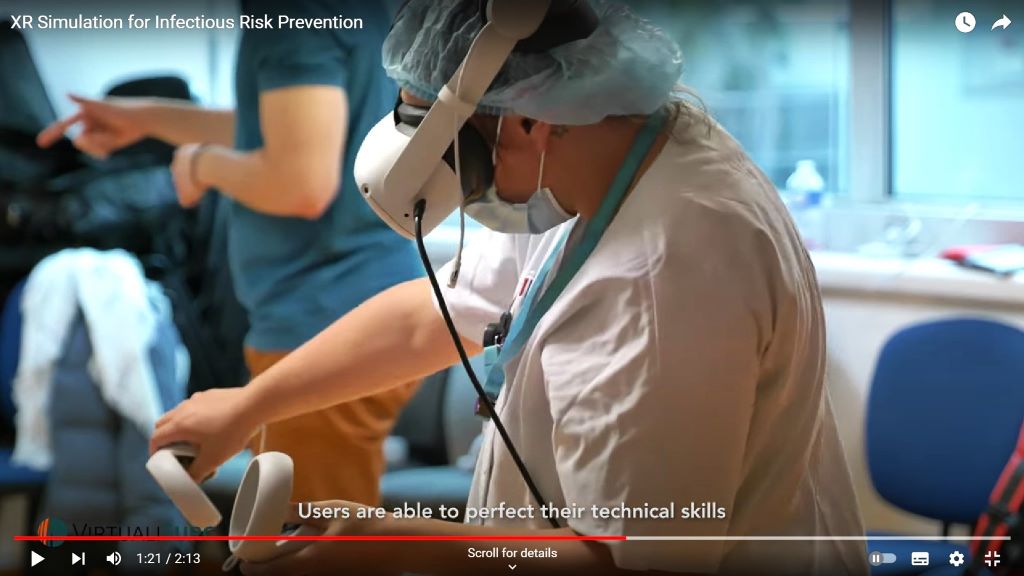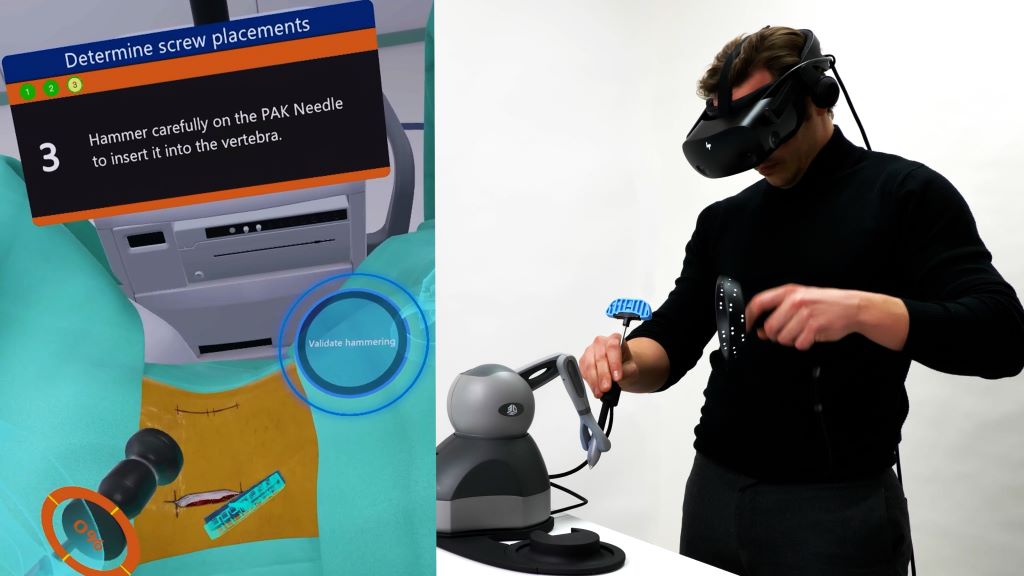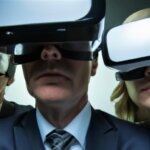Learning in the metaverse: industrial VR upskills employees

|
Getting your Trinity Audio player ready...
|
If you’re skeptical about whether learning in the metaverse is the real deal, it’s worth watching a short video on table tennis. In the clip, a complete novice – who’d never hit a ball or held a bat before – teams up with a table tennis coach for 30 days of remote practice using off-the-shelf headsets. Both are up for the challenge, but unsure if the skills learned in VR will transfer to the real world.
Standing alongside an actual table and watching the novice play table tennis after 30 days of learning in the metaverse, the reaction of the coach to his client’s ability with the bat and ball says it all. “It’s improved massively, it’s actually ridiculous,” he tells the camera.
Forget putting table football in the staff canteen; invest in VR headsets instead. Playing table tennis in VR shows how learning in the metaverse translates from the virtual world into real-life scenarios and could inspire greater adoption of simulation tools for workplace training. VR also provides a handy bridge between on-site and remote working to solve another issue facing enterprises.
It’s long been said that video games can improve reaction times in players, but the table tennis example of learning in the metaverse is richer still. In VR, it’s possible to learn complex movements and develop muscle memory that translates to real-world scenarios. And that is big news for industrial applications.
What’s more, tech fans will note that the player and coach are using Meta Quest 2 headsets, which can be purchased new for around US $300 each (or less, if you want to support the circular electronics economy). Not only does VR enable users to acquire new skills and develop existing ones within reach of a headset, learning in the metaverse can be extremely cost-effective too.
Eliminating the expense of travel and accommodation means that enterprises can invest more in training. Headsets are reusable, multi-purpose, and provide a risk-free environment for making mistakes. And it’s noteworthy that early adopters of the technology have been firms working in aviation, construction, and medical sectors.

Still from a healthcare training session (click here to watch the full clip on YouTube) featuring medical professionals based at the Georges Pompidou Hospital in Paris, France, using VR software developed by VirtualiSurg, which is discussed in more detail below. Keen-eyed readers will note that the headset is identical to the hardware shown in the video footage of the 30-day table tennis challenge, highlighting the versatility of tools for learning in the metaverse.
Considering the bigger picture, PwC found that 67% of those surveyed in its 2022 US metaverse survey – which featured input from 5,000 consumers and 1,000 business leaders – were either building proofs of concepts, implementing use cases, or generating revenue using VR and related technology.
The majority of respondents believed that the metaverse would be ‘business as usual’ within 2-3 years, which may sound like a bold call, but seeing is believing. Once you’ve had the opportunity to try out the technology, the idea of learning in the metaverse feels obvious. Testing out the kit also highlights that there’s no waiting on the technology – today’s headsets are, more often than not, good enough for job.
Apple is betting that users will pay north of $US 3000 for its upcoming Vision Pro hardware, but VR headsets costing a tenth of that price – such as the Meta Quest 2 – have already found multiple commercial applications.
Expert-led professional training in VR
On TechHQ we’ve written about how training providers such as Gemba are using readily available VR hardware to deliver masterclasses in factories of the future and share expertise on lean manufacturing. And, circling back to the table tennis example at the top of the story, it’s worth emphasizing the role of the human expert.
For learning in the metaverse to work well, it’s still important to find the best teachers. The table tennis novice learned from a professional coach, and Gemba’s courses are led by global experts in their respective fields, such as Industry 4.0.
As the technology improves, so does the depth of the experience and the range of applications that become possible. And this can be seen by focusing on how learning in the metaverse is being used in the medical industry.

Learning how to perform spinal surgery in the metaverse using a VR headset in combination with haptic arm robotics and real medical instruments. Image credit: VirtualiSurg.
The medical sector has been quick to adopt VR technology to help train new staff and give surgeons the chance to practice complex procedures in advance. For example, VirtualiSurg – a developer offering high-fidelity extended reality (XR) learning for medical professionals – allows users to work not just with VR headsets, but includes surgical tools as part of the training experience.
Realistic force-feedback technology recreates the handling of real medical instruments, explains the firm – headquartered in Paris, France, and with overseas offices in Brazil, Canada, Singapore, and Japan. As well as improving technical proficiency, the hope is that learning in the metaverse makes healthcare knowledge more widely available.
“We hope to foster the next generation of learning by providing a hyper-realistic environment for surgeons, medical students, and other specialized professions to access world-class training, anywhere and anytime,” said Nicolas Mignan, CEO of VirtualiSurg.
Looking at how learning in the metaverse is benefiting other industries, McKinsey analysts Mina Alaghband and Richard Ward point to a great example in the automotive sector. BMW ran its all-electric vehicle production line as a simulation for six months ahead of confirming the final factory layout.
Learning how to build helicopters and cars
Building cars in the virtual world, on a one-to-one scale, gave BMW the opportunity to refine the assembly process and make as many changes as they liked, something that’s cost-prohibitive on the factory floor. “About 30 percent of what they thought was the world’s best factory on day one of the simulation had to change in the process,” notes Ward.
Other efficiency gains include a speed-up in training. Another talking point in Alaghband and Ward’s discussion on practical applications of the metaverse includes the length of time taken to train engineers to fix helicopters. Previously, the course was 18 weeks long, whereas being able to work on a virtual helicopter, learning in the metaverse, helped to reduce the training down to 10 weeks.
With the holiday season approaching, treating yourself to a VR headset could turn out to be a good career move.









